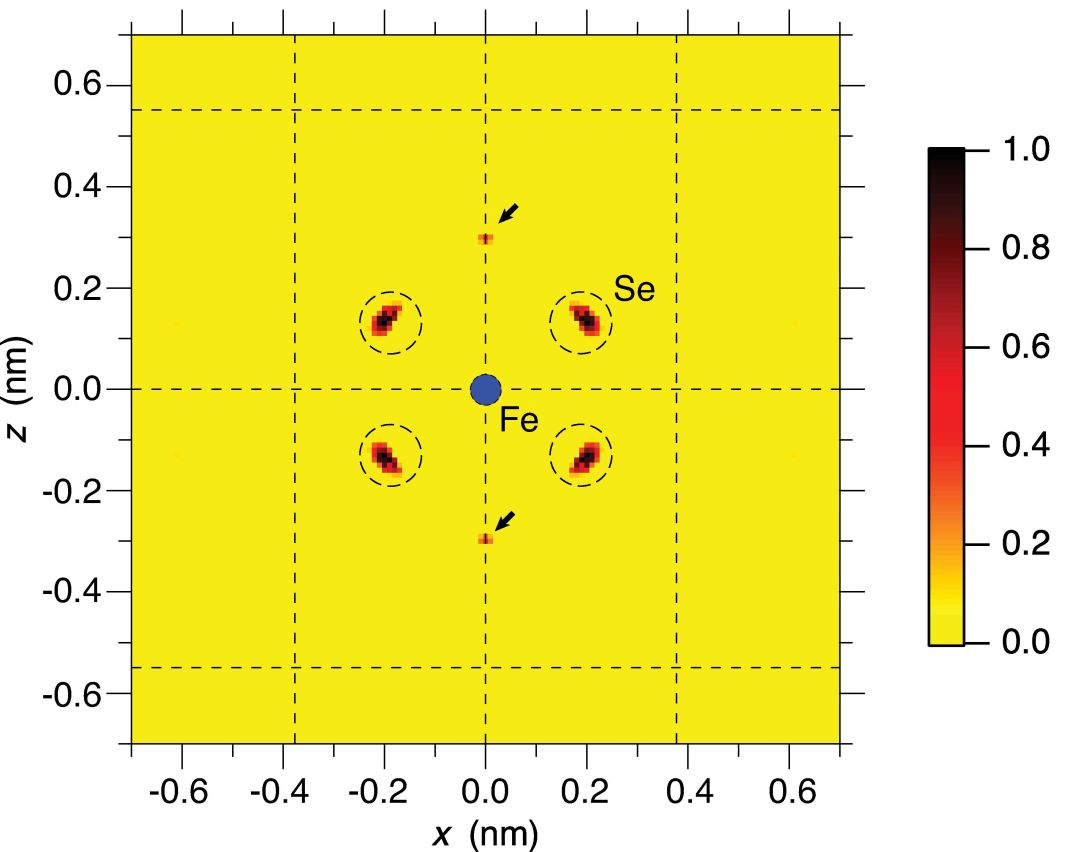- 著者
- Shinya Hosokawa Naohisa Happo Kouichi Hayashi Tomohiro Matsushita Aichi Yamashita
- 出版者
- The Japan Society of Vacuum and Surface Science
- 雑誌
- e-Journal of Surface Science and Nanotechnology (ISSN:13480391)
- 巻号頁・発行日
- pp.2022-001, (Released:2022-01-29)
- 参考文献数
- 26
Fe Kα X-ray fluorescence holography measurements were carried out at room temperature on an FeSe high-temperature superconductor to clarify the relationship between the local structures around the Fe atoms and the superconducting nature. The obtained three-dimensional atomic arrangements strongly reveal a formation of strong FeSe4 clusters. On the other hand, the Se—Fe—Se bond angle largely spreads, causing a large ambiguity in the chalcogen height and large displacements of the Fe sublattice. Thus, it is reasonable that the tetragonal-to-orthorhombic structural (nematic) transition does not affect the magnetic ordering in the Fe layer.
- 著者
- Koji Kimura Kouichi Hayashi Koji Hagihara Hitoshi Izuno Naohisa Happo Shinya Hosokawa Motohiro Suzuki Hiroo Tajiri
- 出版者
- The Japan Institute of Metals and Materials
- 雑誌
- MATERIALS TRANSACTIONS (ISSN:13459678)
- 巻号頁・発行日
- vol.58, no.4, pp.539-542, 2017-04-01 (Released:2017-03-25)
- 参考文献数
- 24
- 被引用文献数
- 10 16
We performed X-ray fluorescence holography measurements on a single crystal Mg85Zn6Y9 alloy, having a synchronized 18R long period stacking ordered structure, and successfully obtained Zn Kα holograms. The reconstruction shows “U”-shaped atomic images in remarkable contrast to the prediction of an existing model with Zn6Y8 L12 clusters. To explain this feature we calculated holograms using a model with positional fluctuations, and fit the reconstruction to the experimental results. It was found that large rotational fluctuations of the clusters can explain the “U”-shaped images.
- 著者
- Yoshihiro Ebisu Kouichi Hayashi Naohisa Happo Shinya Hosokawa Tōru Ozaki
- 出版者
- The Materials Research Society of Japan
- 雑誌
- Transactions of the Materials Research Society of Japan (ISSN:13823469)
- 巻号頁・発行日
- vol.40, no.4, pp.355-358, 2015-12-01 (Released:2015-12-04)
- 参考文献数
- 11
- 被引用文献数
- 2
We carried out X-ray fluorescence holography at an undulator beamline of SPring-8 to investigate the local structure around the La atoms in Sr0.95La0.05TiO3 single crystal at 297 K. The weak La Lγ1 radiation was detected separately from the radiations Ti Kα1, Ti Kα2 and Ti Kβ1. The La Lγ holograms were collected in the inverse mode at seven incident X-ray energies from 7.00 keV to 10.00 keV. By the holograms the clear atomic images of Sr(La) and Ti are reconstructed around the La atom. On the other hand, no images of the O atoms were discriminated from the intensities of artifacts. The atomic image around the La atom demonstrates that the La atoms are substituted for the Sr atoms in the cubic perovskite structure of SrTiO3.
